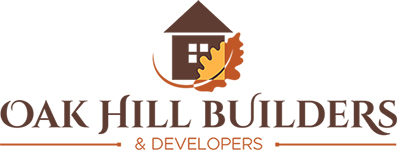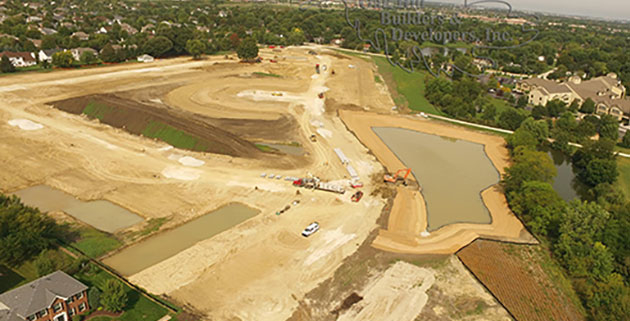Naperville Street naming – Naperville Sun – 5/22/2018
Naperville Street naming – Naperville Sun – 5/22/2018
You might not be able to take a trip down Memory Lane or live on Easy Street in Naperville.
But you can go left on Wright Street or hobnob on Highknob Circle.
Decisions on how streets are named are up to the developers that design the neighborhoods, though city officials get the final say.
Nick Stanitz, owner and president of Oak Hill Builders and Developers, said he likes to incorporate the property’s past into the subdivisions he builds.
“I’m sort of a history buff. I like to read about who paved the way before me,” Stanitz said.
The Naperville developer closed May 15 on a $5.6 million deal to purchase the Clow family property at 103rd Street and Book Road in Naperville. He intends to build 60 single-family homes.
Because the 31.5 acre-property is adjacent to the Clow Creek Farm neighborhood, Stanitz said all but one of the roads in his new development will be an extension of existing ones.
For help, he turned to a member of the Clow family who chose Wendt as the new street name, in honor of longtime residents of the area who farmed their own land as well as on the Clow farm.
Stanitz, who is responsible for the Stillwater and Ashbury subdivisions in Naperville, said sometimes he gets to a point where he doesn’t have any more ideas.
Sharon Court, off Leverenz Road near Book Road, was named after Stanitz’s eldest daughter.
“My other daughters came to me and asked how come she got a street named after her. I said because she’s the oldest,” said Stanitz, adding he promised the other two they would get a street named after them, as long it passes the muster with the city.
Linda LaCloche, Naperville communications manager, cited guidelines city staff considers when developers suggest street names.
To avoid confusion, no street name can be duplicated, and LaCloche said staff denies submissions that sound like or rhyme with existing street names or are difficult to pronounce.
She said the city also will reject proposed names that are longer than 12 characters, more than two words or on the city’s list of restricted “common” street names.
According to the National League of Cities, the most common street names, in order, are Second, Third and First, none of which are in Naperville.
To recognize those who contribute to the community, LaCloche said the city’s commemorative/memorial street name program allows roadways to be named honorary-only after organizations, groups, and individuals. “The dedicated street name remains in place,” she said.
The naming of Naperville roads dates back to the city’s founder Joseph Naper, who appears to have selected the first 11 street names out of function, patriotism and political affiliation.
Naperville Settlement’s Jennifer Bridge said the functionality plays in with Main Street, where commerce was conducted, and Mill Street, where the sawmill was located.
Bridge, who serves as the museum’s curator of exhibits and interpretation, said Eagle Street is an obvious American symbol and Washington and Franklin honor two of America’s founding fathers.
Because Naper was aligned with the Democratic Party, Bridge said four avenues were named after Jacksonian Democrats: President Andrew Jackson, President Martin Van Buren, Thomas Hart Benton (a Missouri senator and devoted Jackson supporter) and William Lee Davidson Ewing, a brigadier general of the Illinois State Militia during the Blackhawk War under whom Naper and other area residents served.
Also whether intentional or not, in the oldest sections of the city East-West roads are avenues while the North-South roads are streets.
She said some street names reflect their time period.
North Avenue and West Street were the city’s northern and western borders, and Center Street was chosen because Naperville thought the DuPage County courthouse would be located on the square.
Bridge said other roads are named for members of the Sleight, Loomis, Brainard, Wright and Wehrli families, all longtime Naperville residents.
When Naperville started growing, developers frequently used themes as street-naming devices.
In Hobson West, a section of a neighborhood is dedicated to Revolutionary War and American Civil War battles with streets like Appomattox, Gettysburg, and Bunker Hill. On the other side of town, colleges – Augustana, Brown, and Emory, for example – are located in University Heights.
In the Moser Highlands, tree and shrub names were used, such as Sandalwood, Lilac, Rose, Cypress, Aspen and Sycamore, and Kentucky Derby winners were used in the Hobson Village subdivision, including Whirlaway, Secretariat, Sir Barton, and Dark Star.
In Ashbury, streets are dedicated to famous poets and novelists: Frost, Keats, Lawrence, Eliot and Conan Doyle.
“If existing roadways connect into the new subdivision, it retains existing name regardless of theme,” LaCloche added.
Deputy Fire Chief Andrew Dina said Naperville’s penchant for subdivisions with themed streets benefits emergency responders because it’s easier to remember. “It totally helps,” Dina said.
On rainy or cold days when outdoor training isn’t possible, Dina said firefighters will pull out maps of the city and grill each other on locations of specific streets. “They make a bit of a game of it,” he said



